
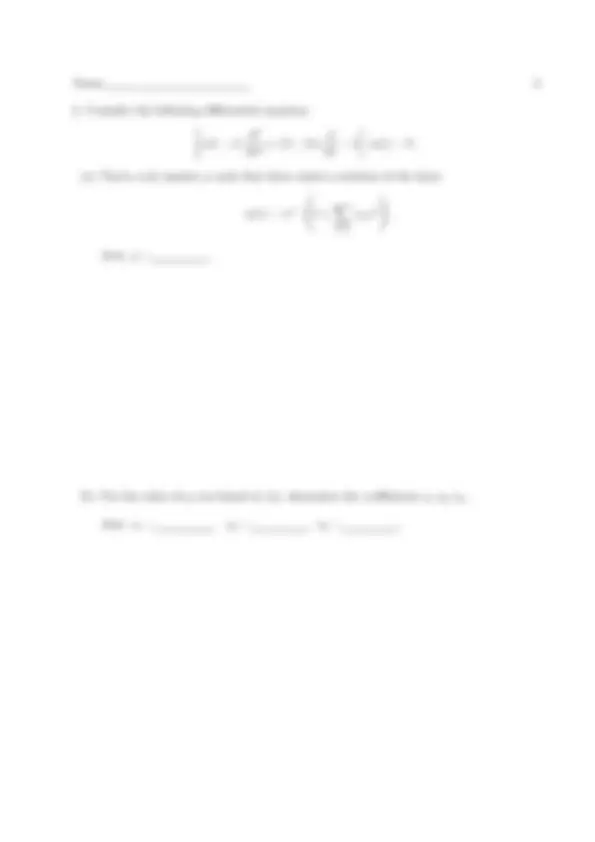
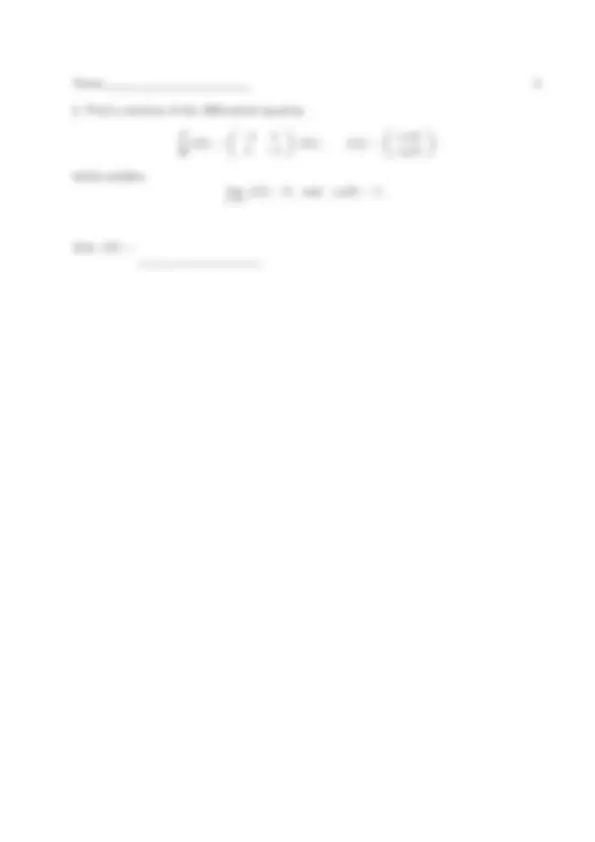
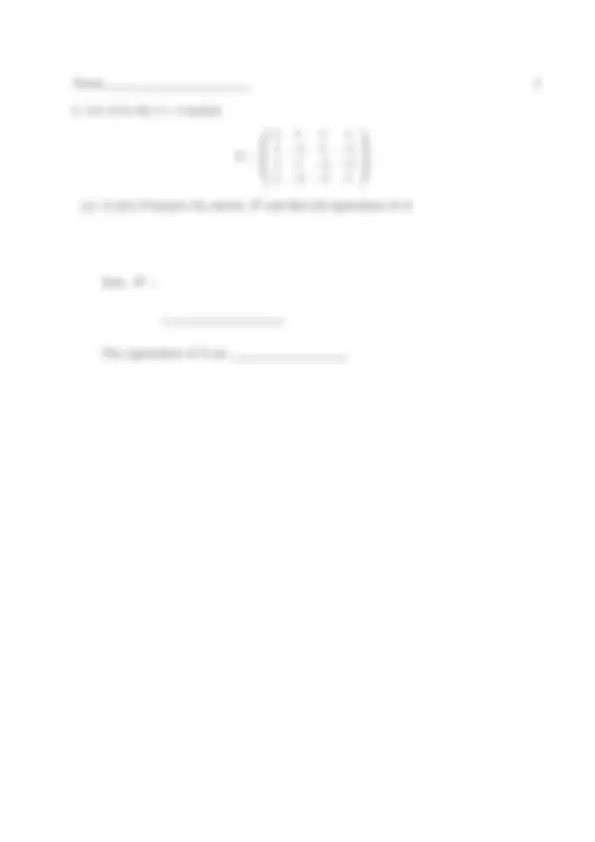
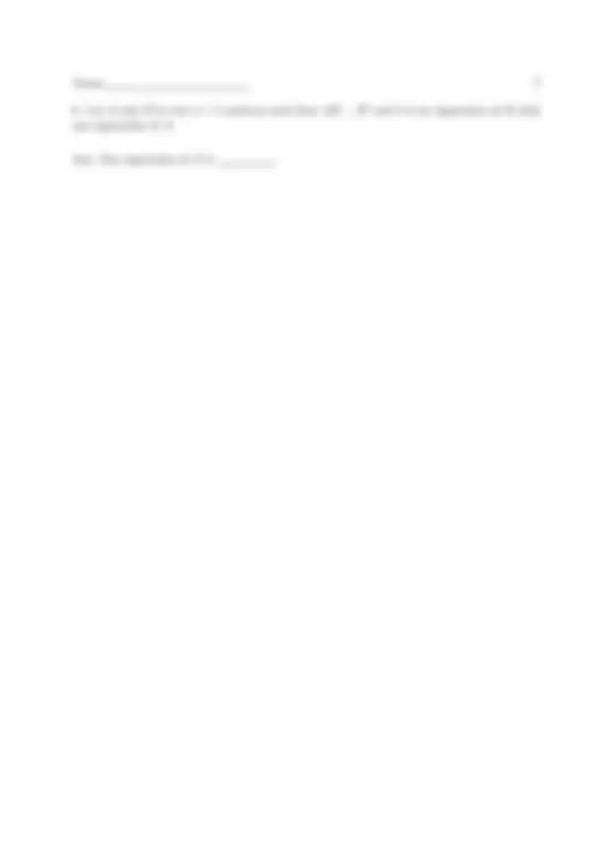
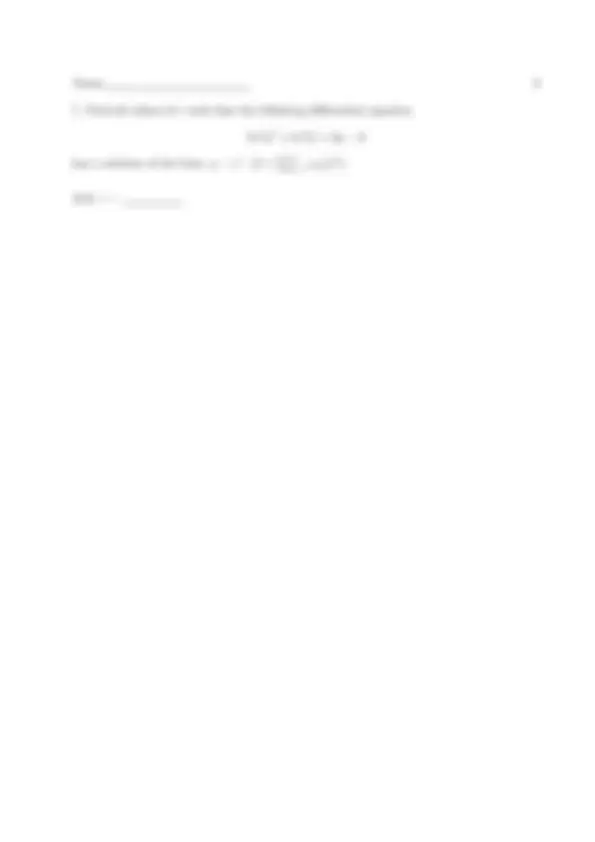
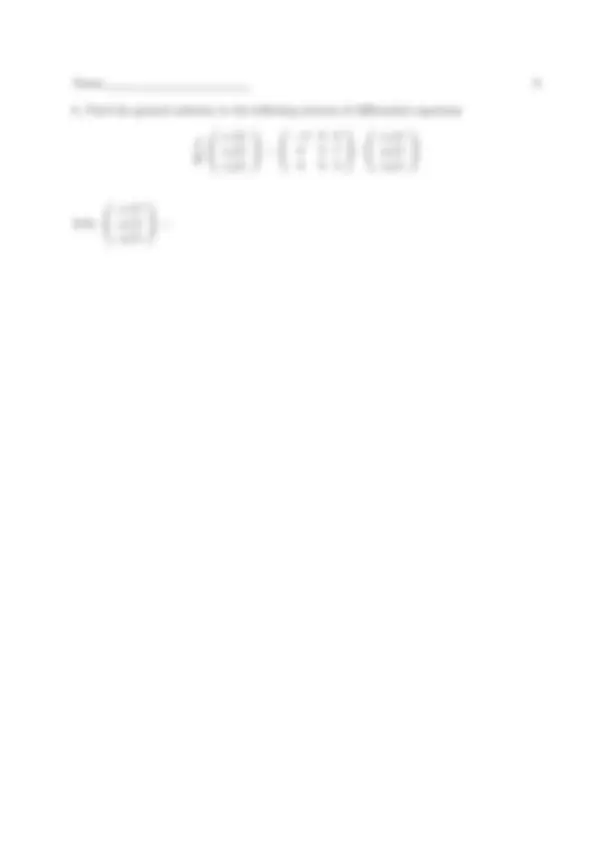


Study with the several resources on Docsity

Earn points by helping other students or get them with a premium plan


Prepare for your exams
Study with the several resources on Docsity

Earn points to download
Earn points by helping other students or get them with a premium plan
Community
Ask the community for help and clear up your study doubts
Discover the best universities in your country according to Docsity users
Free resources
Download our free guides on studying techniques, anxiety management strategies, and thesis advice from Docsity tutors
The instructions and questions for the calculus iii make-up exam held at the university of pennsylvania in september 2011. The exam consists of ten questions, including long answer problems and true/false questions, covering topics such as matrices, differential equations, and vector calculus. Students are not allowed to use books, papers, or electronic devices during the exam, and partial credits will only be given for substantially completed long answer questions.
Typology: Exams
1 / 12

This page cannot be seen from the preview
Don't miss anything!







′′
′′
This examination consists of nine (9) long answer questions and one (1) true/false question. Partial
credits will be given only when a substantial part of a long answer question has been worked out.
Merely displaying some formulas is not sufficient ground for receiving partial credits.
My signature below certifies that I have complied with the University of Pennsylvania’s
code of academic integrity in completing this examination.
Your signature
1 2 3 4 5 6 7 8 9 10 Total
2 k 0
−k − 6 4
Ans. k =.
d
dt
~x(t) =
~x(t), ~x(t) =
x 1 (t)
x 2
(t)
which satisfies
lim
t→∞
~x(t) = 0 and x 2 (0) = 1.
Ans. ~x(t) =
(a) (4 pts) Compute the matrix A
2 and find all eigenvalues of A
Ans. A
The eigenvalues of A are.
3 | 4 ≤ x
2
2
2 ≤ 9 }, the solid region between the sphere of
radius 3 and the sphere of radius 2, both centered at the origin. Let S be the boundary of
D, consisting of the sphere S 3
of radius 3 and the sphere S 2
of radius 2, both centered at
the origin. Orient S by the unit normal vector field on S such that
N (x, y, z) =
1
3
(x~i + y ~j + z
k) if (x, y, z) ∈ S 3
1
2
(x~i + y ~j + z
k) if (x, y, z) ∈ S 2
Compute the surface integral ∫ ∫
S
x~i ·
N dA ,
i.e. the flux of the vector field
F (x, y, z) = x~i through the boundary S of the solid D.
Ans. The surface integral is.
3 and 4 is an eigenvalue of B, find
one eigenvalue of A.
Ans. One eigenvalue of A is.
d
dt
x 1 (t)
x 2
(t)
x 3
(t)
x 1 (t)
x 2
(t)
x 3
(t)
Ans.
x 1
(t)
x 2 (t)
x 3
(t)
3 | x
2
2
2 = 1 be the unit sphere in R
3 centered about the
origin. Orient S by the unit normal vector field
N := x~i + y~j + z
k on S. Compute the
oriented surface integral
S
curl
x
3 ~ i + y
3 ~ j + z
k
x
2
2
2
N dA
Ans. This integral, also written as
S
curl
x
3 ~ i + y
3 ~ j + z
k
x
2
2
2
N dS, is.